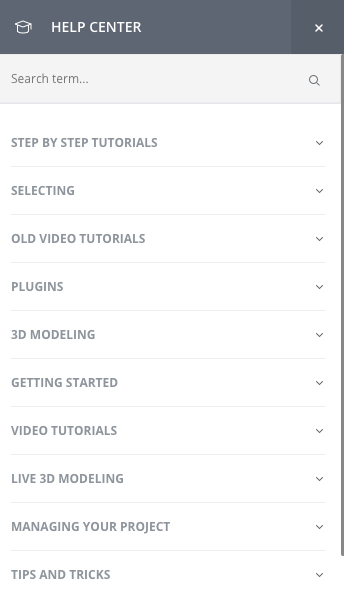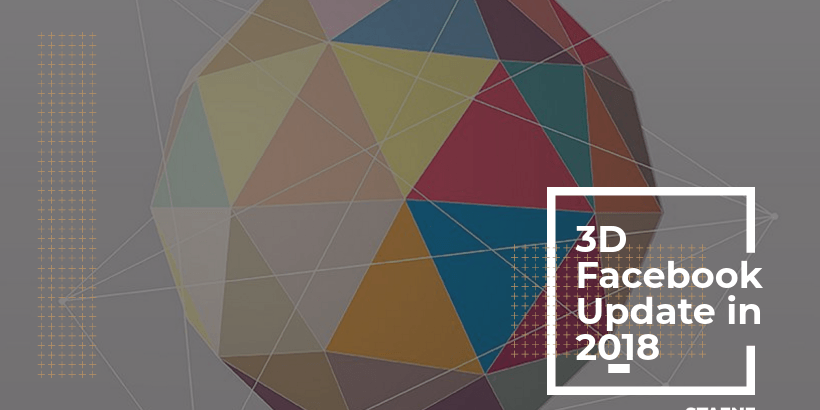Every brand is looking forward to standing out from the rest. And this process enables everyone to try out new things that are trending in the market. So, on these lines, what if you are able to showcase a 3D picture to the users? Facebook recently introduced interactive 3D facebook post in the news feeds. The 3D Facebook update 2018 has given some major goals to the brand as they are able to create a 3D Facebook post with this.
Now Facebook 3D posts support the industry standard glTF 2.0 file format, allowing for textures, lighting and realistic rendering of rough or shiny objects. It’s instantly responsive to scroll and touch, making content pop off the screen. It also opens the door for a future where people can bring interesting objects and experiences with them across AR, VR, mobile, and web. Whether it’s your favorite game and movie characters, architectural models or museum artifacts, all the way to fully interactive scenes.
Facebook has been aggressive about adopting new content formats like 360-degree photos, Live videos, and GIFs in an effort to remain appealing to teens despite being over 14 years old itself.
What we are going to create in this tutorial
Below is one of our Facebook updates where we have shared 3D model of our Academy’s graduation cap. This one is a most updated model as we were trying with different layers and then grouped ones.
Step by step guide for creating a 3D image for the Facebook post
There are many softwares available to create a 3D model. These softwares include Maya, Cinema 4D, 3D Max to name a few. But there are also online tools available through which you can create a 3D model. We have used Vectary to create the 3D model. This tool comes for free. You can create your own account there with Facebook or with your email id. You do not have to subscribe to that. Let’s go through the steps for creating a 3D model and uploading it on Facebook.

Step 1
Import file from your computer and make sure that the file is of SVG or obj or stl format. The SVG format files can be easily found on freepik. The png file is not supported here. Use Illustrator to create the SVG file. Layers of SVG are important while creating this 3D model.
 Step 2
Step 2
Once the file is imported, you can give a different type of animations to the imported object. You can find different angles to move the object in the tutorial. You can also rotate the object as per your choice. The rotation takes place with 2 axis.
Select the layers option from the toolbar which is present just above your art and then select the object layer which you want to rotate.
 Step 3
Step 3
After giving the effects to the model, export the 3D model and select .glb file where you will get two option of high poly and low poly. Here we have selected high poly.
 Step 4
Step 4
Drag and drop the saved file into your Facebook “Write Something Here” box. After this, you can see how the object is moving with the help of hand tool. Once the file is uploaded on Facebook, hit the publish button and enjoy the 3D effect.
Embedding the final product again for your reference :
Sidebar option
 There is a sidebar on the left side of the Vectary from which many other options can be selected to give various effects. The effects include colors, movements to name a few. A guide to step by step model creation is also given there.
There is a sidebar on the left side of the Vectary from which many other options can be selected to give various effects. The effects include colors, movements to name a few. A guide to step by step model creation is also given there.
Along with this old video tutorials, various plugins are also available. So basically, one has a lot of option to choose from. Even if you are a newcomer, the tool is so handy and easy that a layman can also create a 3D model with the help of the tutorials.
The options to select, draw lines, draw block, cut, extrude, mesh, color picker, smoothening off, fit to view are available in the toolbar.
Though the Augmented Reality and Virtual Reality games are already flooded in the market, Facebook including VR and AR technology into its new feeds is cherry on the cake for the users.
This is going to enable a seamless digital world in the near future. Facebook claims that this inclusion of 3D technology is just beginning and they are keen to see the 3D content growing on Facebook as people are excited to share their creative skills with the world.







